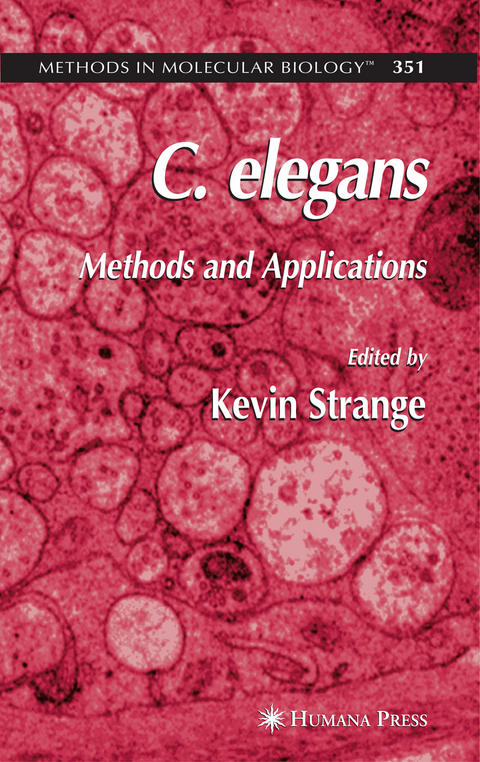
C. elegans
Humana Press Inc. (Verlag)
978-1-61737-668-9 (ISBN)
Molecular biology has driven a powerful reductionist, or “molecule-c- tric,” approach to biological research in the last half of the 20th century. Red- tionism is the attempt to explain complex phenomena by defining the functional properties of the individual components of the system. Bloom (1) has referred to the post-genome sequencing era as the end of “naïve reductionism. ” Red- tionist methods will continue to be an essential element of all biological research efforts, but “naïve reductionism,” the belief that reductionism alone can lead to a complete understanding of living organisms, is not tenable. Organisms are clearly much more than the sum of their parts, and the behavior of complex physiological processes cannot be understood simply by knowing how the parts work in isolation. Systems biology has emerged in the wake of genome sequencing as the s- cessor to reductionism (2–5). The “systems” of systems biology are defined over a wide span of complexity ranging from two macromolecules that interact to carry out a specific task to whole organisms. Systems biology is integrative and seeks to understand and predict the behavior or “emergent” properties of complex, multicomponent biological processes. A systems-level characteri- tion of a biological process addresses the following three main questions: (1) What are the parts of the system (i. e.
An Overview of C. elegans Biology.- Comparative Genomics in C. elegans, C. briggsae, and Other Caenorhabditis Species.- WormBase.- C. elegans Deletion Mutant Screening.- Insertional Mutagenesis in C. elegans Using the Drosophila Transposon Mos1.- Single-Nucleotide Polymorphism Mapping.- Creation of Transgenic Lines Using Microparticle Bombardment Methods.- Construction of Plasmids for RNA Interference and In Vitro Transcription of Double-Stranded RNA.- Delivery Methods for RNA Interference in C. elegans.- Functional Genomic Approaches in C. elegans.- Assays for Toxicity Studies in C. elegans With Bt Crystal Proteins.- Fluorescent Reporter Methods.- Electrophysiological Analysis of Neuronal and Muscle Function in C. elegans.- Sperm and Oocyte Isolation Methods for Biochemical and Proteomic Analysis.- Preservation of C. elegans Tissue Via High-Pressure Freezing and Freeze-Substitution for Ultrastructural Analysis and Immunocytochemistry.- Intracellular pH Measurements In Vivo Using Green Fluorescent Protein Variants.- Automated Imaging of C. elegans Behavior.- Intracellular Ca2+ Imaging in C. elegans.- In Vitro Culture of C. elegans Somatic Cells.- Techniques for Analysis, Sorting, and Dispensing of C. elegans on the COPAS™ Flow-Sorting System.
| Erscheint lt. Verlag | 1.12.2010 |
|---|---|
| Reihe/Serie | Methods in Molecular Biology ; 351 |
| Zusatzinfo | 42 Illustrations, black and white; XII, 292 p. 42 illus. |
| Verlagsort | Totowa, NJ |
| Sprache | englisch |
| Maße | 152 x 229 mm |
| Themenwelt | Medizin / Pharmazie ► Medizinische Fachgebiete |
| Studium ► 2. Studienabschnitt (Klinik) ► Humangenetik | |
| ISBN-10 | 1-61737-668-X / 161737668X |
| ISBN-13 | 978-1-61737-668-9 / 9781617376689 |
| Zustand | Neuware |
| Haben Sie eine Frage zum Produkt? |
aus dem Bereich


